Healthcare decision-makers are facing an overwhelming array of new technology — from AI scribes and surgical robotics to new digital training systems. With limited budgets, competing priorities, and the constant pressure to improve patient outcomes, implementing any kind of change can feel daunting. Below are practical tips to help navigate these critical decisions and successfully adopt new technology that truly serves patients, staff, and enterprise goals.
Digital Technologies Can Alleviate Burdens for Staff
“Digital health” broadly refers to the use of information and communications technologies in medicine and other health professions to reduce inefficiencies and improve quality of care. In a recent study that examined the impacts of digital health, healthcare providers working in sites with high digital health maturity reported more positive impacts — including clinical risk mitigation — than those working with outdated technology.
5 Steps to Foster a Culture of Acceptance for Digital Technology
Successful adoption of innovation requires more than selecting the right tools and resources — it also demands a systematic approach to integration. Following the five steps below can facilitate both purchasing decisions and technology implementation.
- Collaborate: Make sure new technology aligns with organizational and stakeholder objectives, whether that is patient outcomes, operational efficiencies, revenue cycle management, electronic health records (EHR) integration, supply chain optimization, and/or advanced telemedicine platforms, and is in compliance with the latest guidance.
- Define Ideal Outcomes: Review peer-reviewed studies of new innovations and real-world data to establish measurable milestones. By examining evidence of clinical effectiveness, you can create data-driven benchmarks to track improvements in patient safety, quality metrics, clinical workflows, and staff satisfaction.
- Empower Staff: It’s not enough that new technology fits into existing workflows. When introducing new technology, ensure staff are provided with the tools, training, and confidence to take on new roles or responsibilities.
- Consider Operational Feasibility: Evaluate infrastructure requirements and compatibility with existing systems while also developing a strategic implementation plan. Assess vendor stability, support capabilities, and long-term viability of the technology to meet organizational goals.
- Communicate Clearly: It’s important to communicate why the organization needs to implement a new solution and how any new digital technology will ultimately benefit patients and staff. Implementation plans should be created together with internal teams to ensure any new adaptations to processes align with the current standard of care.
Ensure Compliance with New AHA Guidelines
Any effective change management plan must also prioritize compliance with industry guidance, like the American Heart Association® (AHA) Guidelines for CPR & Emergency Cardiovascular Care (ECC) releasing on October 22 Every five years the AHA's Emergency Cardiovascular Care Committee releases updates to CPR and ECC Guidelines, supported by a continuous evidence evaluation process. Specifically, the ECC Committee reviews the science of cardiac arrest care, produces the AHA Guidelines, and supports the development of the training programs used throughout the United States for both healthcare professionals and lay rescuers.
This year, it's anticipated that the AHA will also release enhanced Guidelines for pediatric and neonatal resuscitation, developed in collaboration with the American Academy of Pediatrics® as well as new insights into advanced cardiovascular lifesaving interventions tailored for healthcare professionals. Additionally, the AHA is expected to launch new, updated course curricula and updated materials for Resuscitation Quality Improvement® (RQI®) and HeartCode® programs, both of which deliver training in the core disciplines of Basic Life Support (BLS), Advanced Life Support (ALS)/Advanced Cardiovascular Life Support (ACLS), and Pediatric Advanced Life Support (PALS), and the Heartsaver® First Aid/CPR/AED product line.
Why Change Management Matters When Adopting New Technology
Many technology implementations fail due to poor user adoption and integration rather than technical issues. Positive change management solutions ensure that new systems and processes are used correctly, staff and clinicians are comfortable and patients can benefit. While implementing any type of change, it can be helpful to remember to:
- Allow for Learning Curves: New systems take time and effort. Before technology is procured, it’s important to begin introducing new equipment and processes to staff. Pilot programs that test new tech with small groups can refine processes before large-scale rollouts.
- Ensure Leadership Engagement: Visible support from leadership is critical to staff buy-in and ultimate success. Leadership teams should engage with the end users and ask for feedback from diverse user groups, including physicians, nurses, administrators, and IT professionals.
- Plan for Workflow Integration: Even positive change can be a source of stress. With healthcare systems operating 24/7, there may not be time for a shutdown. Phased rollouts can facilitate continuous and successful operations during implementation phase.
Successful leaders understand that technology adoption is fundamentally about people. Collaborating with staff and stakeholders can improve their willingness to integrate new technology that upholds medical guidelines, enhances patient outcomes, helps meet future state goals for the organization, and alleviates challenges for healthcare professionals.
For more information about how digital resuscitation technology and training can benefit healthcare organizations, contact RQI Partners.







